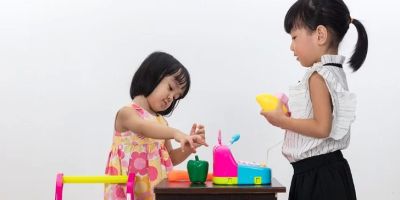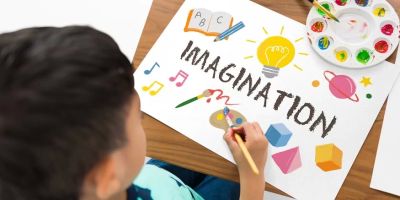Best Toys for Learning Motor Coordination: Fun and Educational Options for Kids
When it comes to nurturing your child's development, motor coordination is one of the most important skills to foster. It plays a crucial role in their ability to perform daily activities like writing, tying shoes, or even playing sports. Luckily, there are plenty of fun toys out there designed to help your child improve motor coordination in an enjoyable way. Whether your little one is a toddler just learning to move or an older child refining their skills, these toys can make a big difference. Let's explore the best toys for learning motor coordination and why they work so well for kids' growth.
1. Building Blocks: A Classic for All Ages
Building blocks, such as LEGO sets or wooden blocks, are timeless toys that promote the development of motor coordination. These simple yet effective toys require children to stack, arrange, and balance pieces, helping improve both fine and gross motor skills. For younger children, stacking blocks enhances hand-eye coordination, while older kids can engage in more complex designs that require precise movements and problem-solving skills.
Moreover, building blocks also encourage creativity, allowing children to build their own structures and even invent their own play scenarios. This not only fosters coordination but also boosts cognitive abilities like spatial awareness and planning. It’s no wonder that building blocks have been a staple in childhood development for generations.
2. Activity Tables and Interactive Play Sets
For younger children who are just learning to move and explore their world, activity tables and interactive play sets can be excellent tools for improving motor skills. These toys often feature buttons, levers, and rotating elements that kids must manipulate, which enhances both their fine motor coordination and their ability to understand cause and effect.
One of my personal favorites is the Fisher-Price Laugh & Learn Smart Stages activity table. This toy is packed with a variety of interactive elements, including light-up buttons, spinning gears, and a piano keyboard. As your child interacts with these features, they develop their fine motor skills, such as finger dexterity and hand-eye coordination. Plus, these toys are typically designed with age-appropriate learning content, making them both fun and educational!
3. Puzzle Toys: Combining Fun with Learning
Puzzles are an excellent choice when it comes to developing motor coordination. From simple jigsaw puzzles for toddlers to more intricate brain teasers for older children, these toys require kids to use their hands and fingers to piece things together, which is great for building both fine motor and problem-solving skills.
For younger children, large, chunky pieces are ideal for helping them improve their grasp and manipulation skills. As they advance, more complex puzzles can introduce challenges that require more precise movements. Plus, the added satisfaction of completing a puzzle boosts confidence and keeps kids engaged. A good example of a great puzzle for young children is the Melissa & Doug Chunky Puzzle, which encourages children to develop spatial awareness as they figure out how to match pieces to the correct spaces.
4. Balance Toys: Improving Coordination and Stability
Balance toys, such as balance boards or wobble cushions, are fantastic for helping kids develop their gross motor coordination. These toys require children to engage their core muscles while also improving their stability and balance, which are vital components of motor coordination. Activities like balancing on a wobble board improve posture, strengthen muscles, and help with overall body control.
For example, the Gonge Balance Board is a wonderful tool for kids of various ages to work on their balancing skills. It encourages movement, coordination, and concentration, all while providing a fun and interactive experience. Children who engage in these activities will notice improvements in their ability to move more confidently and with greater control, both in play and in everyday tasks.
5. Fine Motor Skill Toys: The Perfect Focus on Dexterity
To target specific fine motor skills, toys that require small, precise movements are incredibly beneficial. Toys like Playdough, bead threading kits, or lacing toys help children develop the small muscle groups in their hands and fingers, which are essential for tasks like writing and eating. These toys help kids improve hand strength and finger dexterity, which are key components of motor coordination.
My daughter loves using a lacing toy set where she threads strings through different shapes. It keeps her entertained while strengthening her hands and improving her fine motor coordination. It’s a simple yet effective way for kids to engage with a fun, tactile activity that enhances coordination without even realizing it!
6. Active Play Toys: Boosting Gross Motor Coordination
Active play toys are great for helping kids improve their gross motor coordination. Activities like jumping, running, and throwing all help to build strength, coordination, and balance. Toys like jump ropes, hula hoops, and soft balls allow kids to be active while enhancing coordination. These toys improve their ability to control larger movements and make them more aware of their bodies in space.
As a parent, I’ve seen how my son benefits from using a hula hoop or soccer ball in our backyard. It’s incredible how a few minutes of active play can increase his coordination, confidence, and overall enjoyment of physical activity. Plus, these toys can easily be used indoors or outdoors, providing versatility for your child’s playtime.
Why Motor Coordination Is Important for Kids
Motor coordination is a vital skill that allows children to perform a variety of daily tasks, from dressing themselves to participating in sports. It involves both fine motor skills (small, precise movements) and gross motor skills (larger body movements), both of which contribute to a child’s overall development. Toys that encourage motor coordination help children build the foundation for these skills, improving their physical and cognitive abilities.
Investing in toys that improve motor coordination ensures that your child develops these crucial abilities in a way that is both enjoyable and educational. Whether it's through building with blocks, completing puzzles, or engaging in physical play, the right toys can make a significant difference in your child's development.
For the best selection of toys that promote motor coordination, be sure to check out Knight Toys, where you'll find a wide variety of educational products designed to engage children while helping them develop essential skills.





